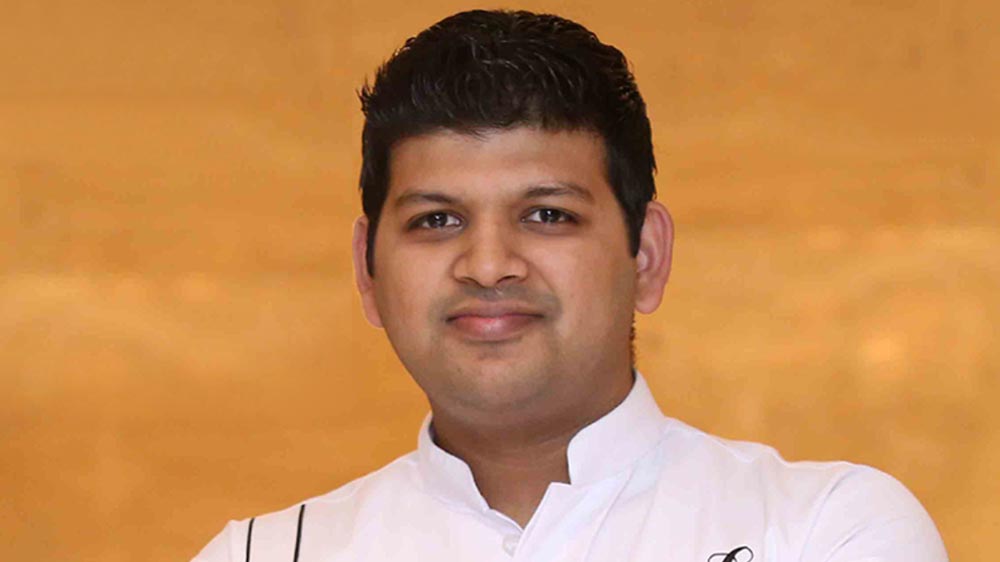
At a tete-a-tete with Abishek Gupta, the executive sous chef at Leela, who interned at the famous Noma restaurant in Copenhagen, he spoke about his travels and how has it influenced his methods and thought the process of cooking.
Tell me about your pop-up dining restaurant, Epic?
This restaurant is more about experimental cuisine, majorly working on a lot of Indian flavours. It is an integration of global experience and local flavors. We use local ingredients. We innovate there and have created around 320 plus dishes as of now which have been shared with the diners and got some great feedback. Few dishes worked, few did not.
For example, we work a lot on local fishes but being in Delhi we don’t get it. Every Friday we get fresh seafood from Cochin. The idea is to create something from the local fishes. We have created a local Ceviche and it is dedicated to the Koliwada community of Mumbai. The dish is served on a live aquarium. The idea is to pay homage to people working hard to get seafood. We used the Peruvian technique to make Ceviche and combined it with our local fish. It was very well appreciated and diners enjoyed it.
The bookings are majorly by word of mouth. The idea is not to make money but to create awareness among the clients that Indian ingredients can also be at the prime level. I don’t need to have white asparagus from north Italy, I can probably use eggplant from Himachal and make it as premium as white asparagus.
How often you make changes to your menu?
I try and change the menu every month. But if my vendor calls me saying that he has some great mushrooms, I will probably use it. The idea is that till the time the produce is coming in, you keep inventing the dishes and keep fixing it to the various stages of composition. One of our philosophies is that we don’t like to repeat ourselves, we experimented with the root vegetable last year and this year I will not repeat it, I will take the root vegetable and treat it differently. So the idea is to take local ingredients and give it a global appearance.
How was your experience at Noma?
Getting into Noma restaurant was a continuous Endeavour; from the last five years, I was trying and applying like mad. Finally, in 2016, I got a chance to work for him.
There were 26 nationalities and everybody would treat every ingredient very differently. So if there is an apple season in Copenhagen, everybody will look it differently. Like for us, apples have been in desserts and pies, tart or salad but nothing beyond that. But when the Japanese see an apple, he might have a different version of it. The possibilities are endless there.
The idea of working with them was to understand how they work. Once you understand that then you can come back to your ecosystem, see what is there and create something of your own.
How do your cooking methods get influenced by your travels?
I travel a lot. I have been through to 15 odd countries and every four months I travel to see what’s happening in the world. Dishes in Epic do get influenced by my travels. For example, I had some local meals in the Himalayas. People offered me biccchu ghas ki sabji with mandwe aate ki roti. It was damn delicious. I made it and served it at my restaurant. When I travel in India, I try to grab some ingredients and bring back and create some dishes out of it.
Food travels and it’s just like memory. Travelling for me is only to learn from various places, to create something new, which is very Indian and is also accepted by a global diner.
How sustainable is our menu today?
The menus have become shorter now; they are already changing to what is available in the market. The purchasing team has become more aware, chefs are asking for what is there in the season. So the drift has already been started. In the past three years, I have witnessed a drastic change. People are having happy hour drink made of jamun. That’s a new fancy drink. So change is happening and everybody is contributing in their way.
What is trending today?
I see people moving back to basics. I see people are moving towards taste. Moving forward, I think core taste and seasonality will marry each other.
You also studied Botany?
In 2013-14 I studied Botany, even before I came to Leela, that was how you can use various plants and flowers in cooking but I could only bridge the gap in theory and my practical when I went to FRI in Dehradun. So there I got exposed to a lot of professors who are already doing a lot of research on available leaves and flowers there. There is a professor who had written a book. I still use it. It has over 700 ingredients on plants and flowers in Dehradun and Himalayan belt, you can use them in cooking. Only 10% of it has been used now and we have no idea about that.
Copyright © 2009 - 2024 Restaurant India.







![Gurugram's Only Microbrewery at 32nd Milestone [Must-Visit]](https://restaurantindia.s3.ap-south-1.amazonaws.com/s3fs-public/content12654.jpg)

